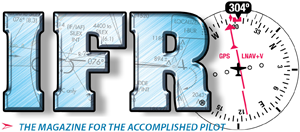On average, aviators know what a Temporary Flight Restriction (TFR) is. However, do they know that depending on the TFR, there are exceptions to the “No Fly” edict? But wait. “Depending on the TFR?” Okay, so there is obviously more than one type, but just how many different TFRs are there? Enough for you to check your NOTAMs before you go … No intercepts, please!
Let’s refresh our memories on what a TFR is and how it affects general aviation. The basic rules may be to stay out, but that depends on the TFR and other factors. TFRs restrict airplane movement in areas of government VIPs, special events, natural disasters, or anything that would warrant keeping airplanes out of said airspace. All these reasons can be broken down into separate categories to determine whether someone can enter. Knowing these details and understanding how to read a TFR notice will enhance your thought process and assist in flight planning. Depending on what kind of flying you do, that knowledge could be the difference between accomplishing your mission or some less desirable alternative.
Handling VIPs
TFRs have been around for a while, and the main one that most of us are aware of is the Presidential TFR (or VIPTFR). This also applies to the Vice-president or other important government officials— per 14 CFR §91.141. It is between shortly before, during, and shortly after a VIP is expected in an area. This NOTAM may be issued from a day to a week before the visit and has the highest restrictions. No GA aircraft movement is allowed in a VIPTFR, aside from the DC TFR that is more formally known as the Washington DC Special Flight Rules/Flight Restriction Zone (DC SFRA & FRZ).
The FAA can change these restrictions on a case-by-case basis, but for the most part, only Part 121 airlines, a few 135 (with special permissions), and Part 91 medevac flights are permitted to operate within a presidential TFR. Past that, 30 miles out from the center and up to FL180, you would be wise to avoid it unless you want to see some F-16s up close.
Special Events And Disasters
Another type of TFR is for “Special Events.” This applies to the Superbowl, concerts, and other happenings with the potential for a large attendance. They are generally smaller and have fewer restrictions. The Superbowl generally doesn’t allow any VFR aircraft near the stadium. Some exceptions are allowed for aircraft on an IFR flight plan and with special permissions. Filing IFR by itself is not permission; sometimes, you need a clearance from the Transportation Security Administration (TSA).
There are several of these TFRs near the airport where I work and they are mainly for events near stadiums. Often these have the exception to “fly through” if you are actively talking to ATC on either the approach frequency or the closest Tower (any airspace the TFR touches). The term “fly through” in this instance means Point A to Point B—no loitering. Most medevac helicopters that fly low will attempt to talk to ATC when they can as a courtesy, but are exempt in most cases.
The natural disaster TFR, such as the fires in California a while back, often involves airborne resources that want clear access to the area. Also, it can include smoke that may be toxic or reduce visibility to IMC. These TFRs should be self-explanatory; if you aren’t a firefighter or assigned to help, stay out!
They Are NOTAMs
Just like any NOTAM, TFRs have the potential of reading differently. Some allow entry, and some don’t. There are two permanent TFRs in the United States. Do you know where they are? Because of their longevity, there are potential ways to operate in them if the need arises. One involves some training, the other, just permission. Like any other FAA document or order, pilots need to understand the fine print on the actual published NOTAM.
Diving deeper into actual TFR differences, let’s start at the top of the pyramid. The VIPTFR can be a few pages long or relatively short. Because of this aspect, go to tfr.faa.gov, and search for “security” NOTAMs. Recently “FDC 1/9005” was for a VIPTFR in Tampa, Florida, and was about 1000 words long. The TFR around Washington DC (FDC 1/1155) is much shorter (200 words) than most VIPTFRs because it is one of the permanent TFRs. The main difference between these two is the active time. Pilots operating within the DC TFR under VFR flight rules are required to take a course on FAASafety. gov. The few exceptions include flying IFR, law enforcement, military, medevac, and emergencies.
For the other VIPTFRs, such as Tampa (or generally wherever the president goes), those 1000 words are essential stuff. The big takeaway from all that is “Except as specified below and/or unless authorized by ATC.” It’s a category game, and it’s the responsibility of the PIC to see if they can fly through. Being screened by TSA is a big deal in those types of NOTAMs. Talking to ATC while on a discrete squawk code is a key aspect. “ATC may authorize transit operations. Aircraft may not loiter.” From my experience, this type of NOTAM is typical, but specifics can change on a case-by-case basis. If numerous “important people” decide to go to the same place at once, the restrictions may go down to “zero movement.”
I had the president transition twice in or near my airspace, and both times, despite what the NOTAM said, we were required to stop all traffic for a 15-minute period. Generally, that’s no big deal until we get one GA aircraft that had no idea and decided to take off from a nontowered field nearby and ask for transition. Yes, it happens—too frequently.
Actual NOTAM wording differences are a big deal. It may be a tad annoying, but again, diving down into the roots can help determine exactly what you can and cannot do. Improper planning could mean getting kicked out of the lateral bounds of a TFR, or if you don’t do that, a deviation. Oh, that second permanent TFR is the one over Disney World.
Intercepts
Air Traffic Controllers are thoroughly trained and aware—or should be—of any TFRs in or near their airspace. However, there are times when a “popup TFR” occurs, and even ATC gets short notice. These are often less strict and not the end-of-the-world if pilots find their way out as soon as they know.
If you stray into a TFR, should you just beeline it to the edge once you figure it out? Knowing intercept procedures can be a good thing (AIM 5-6- 13).

ATC provides traffic calls to all participating aircraft on a workload permitting basis, and this is intended for pilots to “see and avoid,” or in the case of IFR aircraft on occasion, “maintain visual.” As for violators that have hostile intent or don’t know better, ATC may assist the intercept aircraft to do their thing.
Because of speed difference, the general aviation aircraft may get “buzzed.” A good shaking from an F-16 fighter flying past should wake you up enough to land or exit ASAP. There may be Blackhawk helicopters (that can fly a lot slower), and the intercept procedures are the same. ATC can help if you are intercepted. The main reason an airplane would be intercepted flying through a TFR is that they are not talking to ATC. If not, get the closest facility on the frequency, or even go to 121.5. Always monitor first as they may already be issuing instructions and be sure to comply with all instructions
If you are talking to ATC, tell them you are being intercepted and intend to comply (everything is recorded and could help you later). ATC might have specific instructions for you. If an aircraft does not comply and is flying directly toward the TFR objective the interceptors try to get the plane to change course.
If an aircraft keeps on going after being intercepted, and it’s determined that they have zero intention of complying, you know what can happen. TFRs are not just any other NOTAM; they are the most important ones, in my opinion.
Proceed On Course.
Understand the meaning of the TFR and its rules as it could be the difference between landing safely or a worst-case scenario. Since 9/11, the FAA and the military have determined what must be done if the line is literally crossed. Make sure you stay on the correct side.
The moral of the story is that as much as we might find NOTAMs, doing a weather brief, conducting a preflight, etc., tedious busywork, we need to do these critical tasks every time. CFIs need to be teaching their students the importance of these functions. As always, fly safely.
As mentioned, several TFRs go active around my airport for events, and two of those are not even in my airspace. On one of these days, we had a TFR for a football game at a nearby stadium. In the middle of this TFR, a Cessna 206 was circling the stadium for live TV coverage at 2500 feet (with proper permissions). I was in contact with this airplane and kept him informed of “any traffic in the area.” The general rule is to move other airplanes out of the way instead of the other way around. Obviously, for safety reasons, I do whatever is needed to satisfy the requirements.
We had a mix of pilots who knew about the TFR and some who didn’t. Those VFR pilots who knew about it decided that they had to fly around it. In turn this created multiple conflicts for arrivals at another airport. Despite their apparent lack of knowledge, they were VFR and not doing anything illegal. On the other side of things, I had to explain numerous times to pilots, “Yes, the TFR is active. Yes you can fly through it as long as you are talking to ATC and there’s no loitering.”
It was a long day. Behind door number three, I had others flying right through the TFR without talking to anyone or being identified on the radar. If anything, I was watching it closely and keeping the 206 informed of any traffic approaching. We had several medevac helicopters pass that were exempt but stayed low level and generally went around the stadium to not interfere with the 206. They were in communication with ATC.
By the end of the day, I did have to divert the 206 once due to a student pilot. Never found out what exactly happened on the pilot side, but on my side, I had a Cessna 172 fly right through and was headed directly at the 206. I issued traffic multiple times to the 206, “Traffic five south, northbound. Altitude 2700 feet. Type unknown.” This is a non-standard traffic call that ATC occasionally uses for aircraft conducting circles, as we don’t know exactly what direction they are facing due to radar lag. The 206 came back several times, “Searching … Searching … Not in sight.” This was a classic case of merging targets. I wanted to let the pilot determine the best course of action, but he was intent on getting his shot of the stadium. “Traffic alert, (206 callsign), traffic just south of you same altitude. Fly west and climb immediately!” He complied and avoided the student pilot and called, “Traffic in sight,” as soon as he straightened out. I responded, “Resume own navigation.”
Sure enough, when the student pilot was nearly out of the TFR, he called me, “Tower, N12345, six miles south, full stop…” Obviously, I wasn’t happy, but it’s always best to remain professional, “N12345, Tower, how do you hear?” He replies, “Uhhh, loud clear…” “Okay, you just flew right through a TFR and came within one-half mile of another airplane. Were you talking to Approach?” He replied, “Uhhh, negative, student solo.” Confused as all get out, “N12345, you were supposed to avoid the TFR or be in contact with ATC, you almost hit another airplane. Cleared to land…”
If the TFR pops up without much notice, there is plenty of leeway and patience, but we all need to be as prepared as possible when operating in the NAS






You are incorrect when you say that GA is not allowed within a presidential TFR. GA is not allowed within the inner circle, but on a flight plan with a discreet transponder code, GA is permitted in the outer area.
^^^This^^^
“…important government officials…”
No such thing.